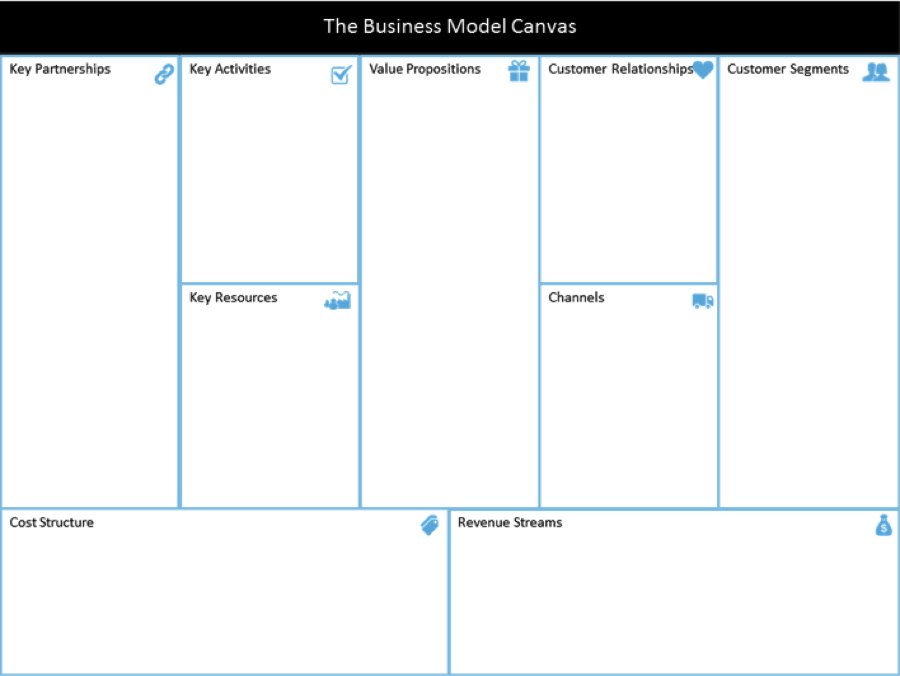The traditional business plan has created the wrong expectations of a CEO at a small business, and there’s a revolution afoot in the way elite MBA programs and Silicon Valley think about small business strategy and startups.
The underlying assumption of the traditional business plan is that that the CEO is all-doing and all-knowing. This concept is misguided and is finally being rejected. A startup doesn’t need an omniscient, omnipotent CEO — it needs a liberated one. And finding that freedom with a Business Model Canvas only takes about 15 minutes.
Whatever your traditional business plan might say, it’s time to chuck it in the trash or risk dying a slow death in the do-it-yourself trap. DIY is what prevents the kind of explosive growth every small business seeks.
A Business Model Canvas reduces a traditional business plan to a single page so all stakeholders can understand the business model at a glance. It’s also easily adjusted to offer a new view of the business that allows more questions and discoveries.

Last month, we drew a Business Model Canvas like the one above and started thinking about the value propositions, from which everything else radiates.
This should be filled out with the core of the business, meaning the value it brings into the world. With that done, the focus turns to the right side of the canvas.
Customer segments
Customers are the judges of the value propositions, so it’s critical to know who they are: gender, age, where they live, and everything else you can find out. This cannot be left to a guess.
When the Value Propositions fit perfectly with a need or a pain point for your customer segment, that’s product-market fit, which is the foundation on which every successful business is built.
Channels
How are the Value Propositions delivered to the customer? An app? A store? A drone? The distribution channels that are used have many implications for the type of business you’re building, including the relationship to cost structure on the left, and customer relationships on the right.
Customer relationships
Every business wants the same core things: to attract customers, keep them and grow the base. How will customers find out about you? What will get them out of their routine and convince them they should spend money on an unfamiliar product?
Once they’ve done so, what keeps them coming back? Most small business owners think customer service will, but that’s far from the only way to do it. Other strategies include things like “habit” and “high switching costs.” Whatever the strategy, once an initial group of customers is established, how does that base grow so that the business can expand? Referrals? More features, products and services?
Also on StartupNation.com: The Right Questions for Small Business
Revenue streams
The last item on the right side is where the money is made, and the customer segments and value propositions of the Business Model Canvas make this part fairly clear.
It may be that not every customer hands over money. In Facebook’s bifurcated model, for example, users play on the site for free while businesses pay for ads. A nonprofit may bifurcate its customer segments into the group it plans on helping, and its prospective donors. And if the federal government is persuaded that the business provides a social good, it could mean a contract or grant. All of these are different, and perfectly viable, revenue streams.
No matter what, though, at least one customer segment must pay. How much, and how they do so, goes on sticky notes in this area of the canvas.
With revenue streams mapped out, all the components of the right side of the Business Model Canvas are nailed down, and the core value the business exists to provide is established.
Next month, we’ll look more closely at the left side of the canvas and finish a process that helps small business owners realize the full potential for their product — and liberates them from the DIY trap.






